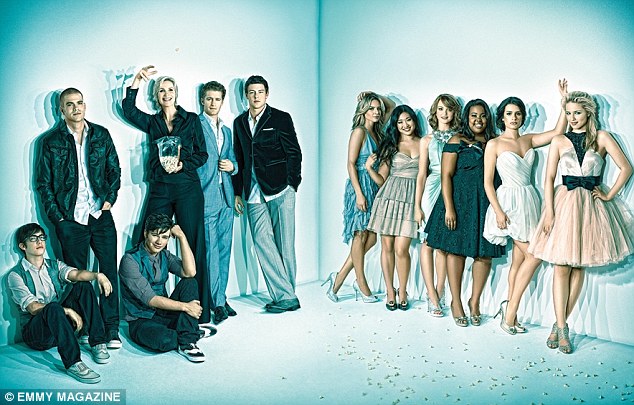In the beginning Glee made a brand out of celebrating the insecurities, joy, and passions of a group of social outcasts. Quickly, however, Glee called into question its treatment of women, prompting the New York Post to ask “Does Glee! Hate women?” In season one alone a woman is shown to be conniving enough to fake a pregnancy to “keep her man” and another, this time a teenager, grappled with pregnancy until, poof, the storyline magically disappeared. Luckily Madonna’s “Papa Don’t Preach” was able to get into the mix first, or I would have been pissed.
Besides the stereotypical portrayals of women-as-girls-as-GQ-cover-models-being-schoolgirls that this show offers, Glee goes further by, perhaps unintentionally, mocking its characters. Vitriolic gym teacher Sue Sylvester (who eerily resembles my elementary school gym teacher) relies on her bitter use of the pretty girls and exploitation of the token special needs child as a means to succeed to her ultimate end. As their most fully fleshed-out character (and perhaps most accomplished actor) Jane Lynch does a great job being angry but does nothing for the stereotype of the angry lesbian gym teacher taunting kids to make herself feel better. Coach Beiset’s introduction furthered this by presenting this gem of a storyline: no man wanted to kiss her so what was a woman to do but become an angry, middle-aged football coach: the better to scream at you, my dears.
Mixed in with the older women who suffer to fall in and keep love and affection, the teens of Glee keep the teenage dreams coming faster than Katy Perry’s hits. Puck, the number one misogynist/baby daddy/Neil Diamond Crooner and the show’s resident sometimes Gothic sometimes snarky, always shown eating or wrestling, Lauren, are just one of many unconventional couples Glee has drummed up. Lauren’s morbid obesity might once have proven to be a means for character slander, as Puck himself proclaimed when he said to then pregnant Quinn “I’m not breaking up with you. I’m just saying please stop super-sizing because I don’t dig on fat chicks.” Now, however, it is the stuff of fetishistic pop preening. First, Puck serenades his new love interest with a rendition of “Fat Bottom Girls” and, shock, she finds it offensive. To make it better he sings the original number “Big Ass Heart” because it is okay for the organ that pumps our blood and, symbolically, falls us in love to have a “big ass” even though a heart has never won a pie eating contest or needed two seats in an airplane. We get it–there’s a size difference here.
Having a character on TV who does not fit into the mold of being a perfect Westernized ideal of beauty would, in someone else’s hands, be refreshing. Glee, however, focuses on the extremes of women, enjoying the overt and campy hyperbolization of its characters which, in essence, detracts from actual storylines and only serves to render the women flat and one-dimensional: Jewish starlet, slut, dumb blonde, conniving cheerleader, sassy black woman, an Asian, and, now, a full-fleshed female. Glee has a recipe with every ingredient, but stirred together it’s one big lump of heterogeneous stereotypes. I’m not saying this couple should not exist; I am simply implying that it may have been beneficial to give her a love interest that does not appear to be ten seconds from dumping pigs blood over her head at prom.
Two other prominent female characters central to Glee’s narrative arc are slutty Santana and dumb blonde Britney. These two rarely have lines, and, when they do, it is solely to enforce these two personas. What they do have, however, is a girl on girl on glee make out session. Of course Glee would need to have two of its beautiful, popular women fall in love and make out, why not? Glee loves Katy Perry and she kissed a girl and, damn it, she liked it. The issue is not girls kissing girls; it is the exploration of lesbianism in a trite and frivolous manner.
The trials and tribulations girls in high school are facing today are by no means easy. From eating disorders to bullying, the very struggle of learning who you are as a woman, inside, out, sexually, emotionally, is a process. Women today are barraged with images of who they should be, how they should act, and whom they should kiss. Glee, in an attempt to make it okay to be whomever you are, has simply created an hour of sing-along to the pain and pleasure of all the versions of themselves that girls see when they look in the mirror. We are all sexy and scared, stupid and skinny, fat and fabulous–but fleshing out these various facets to frivolous plotlines and self-mocking monologues is akin to giving every girl a Barbie with adjective occupations. Women deserve more than this style of characterization.


I like watching it but damn your character analysis is spot on.